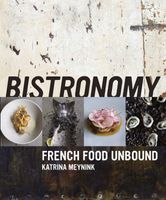Advertisement
Tasting Notes
Appears in
Published 2014
6 things I should point out …
- Cooking these recipes, like the bistronomy dining experience itself, can be rough, unrefined, beautiful and occasionally painful. The food is not designed by committee so it varies from the accessible to the aspirational.
- This is not an attempt to answer the who, what, where, why, how and will it last mysteries of bistronomy: it is merely a few lucidly pointed fingers, signposts — if you will — to the phenomenal success of this style of dining and its greatest global ambassadors — the chefs, the producers, and you, the willing eater.
- This book is a celebration of flavours. Off-the-wall combinations, reinterpretations of the classics, the joy found in the simple and the challenge of the complex. It is a chance to sniff out what these chefs are doing and how they make the food taste so amazing. The menus at bistronomy restaurants change. Constantly. So these recipes are, for the most part, fleeting tastes of what the chefs can do, and a chance for you to try them at home.
- Sometimes, a restaurant, chef or recipe has been included within these pages that may not fit your perception of what bistronomy is; but sometimes there is food, an ambience, or a chef’s spirit that defies description. It is for everyone, but it doesn’t aim to please all comers.
- Don’t be afraid to cook. Ingredients and chefs like to misbehave, so they make epic bedfellows. The wonderful thing about cooking is that mistakes are usually very short lived. So enjoy your cooking, pass your pleasure to the table, and discover that the food is likely to be far less rebellious when accompanied by love and wine.
- Veal tongue is surprisingly tasty.

